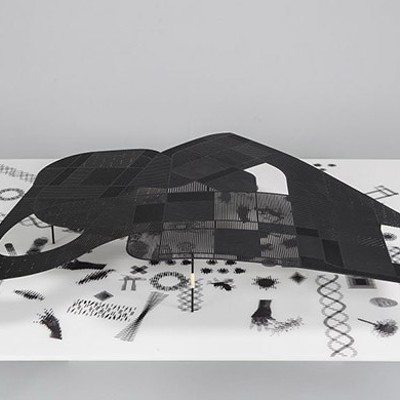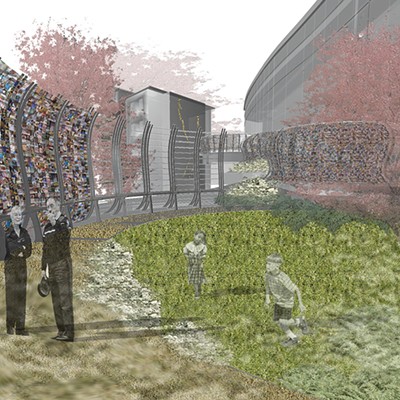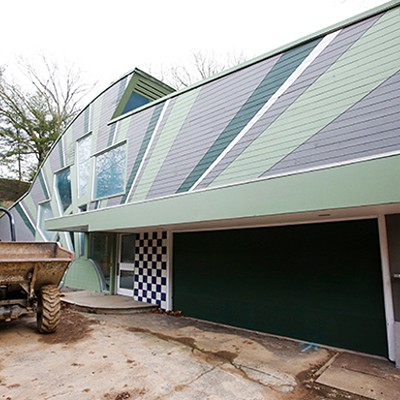Hot enough for you? Pittsburgh's slide toward the really grueling hot weather seems to be gradual, but it's only a matter of time before the debilitating waves of heat and humidity blanket us. Of course, the first temptation is to crank up the air conditioning: Let the miracle of modern Freon drop the temperatures down so far that you need a sweater to, say, sit through the movie. Or tempt potential customers into your Shadyside chain store by wafting great weather systems of chilled air through open doors to the sidewalk.
But the future of energy conservation suggests using air conditioning less or not at all.
Let's face it: Most air conditioning is terrible all around. The traditional chlorofluorocarbon-based refrigerants are notoriously bad for the ozone layer, and many remain in use, though they are being phased out. Substitutes, primarily the refrigerant R-410A, known by the brand name Puron, are less harmful to the ozone, but still toxic, according to the Partnership for Advancing Technology in Housing.
Besides, air conditioning cools only on a small scale. Globally, it actually warms the earth. The electricity to run it comes from power plants, particularly coal-fired ones, that themselves produce precisely the heat-trapping pollutants that make us want to turn on the a/c in the first place.
Air-conditioning technology dates back at least to 1842, when Florida physician John Gorrie used compressor technology to make ice. Brand-named inventor Willis Haviland Carrier developed electrical air conditioning in 1902, but the technology achieved only gradual popularity. It wasn't widespread in homes in the U.S. until the 1950s.
Before then, architects and builders were forced to pay closer attention to other ways of cooling, such as ventilation or insulation. Ellis Schmidlapp, founder and principal architect at Landmarks Design Associates of Pittsburgh, likes to emphasize that many historical buildings have inherent properties of energy efficiency that a few decades of air conditioning have made us forget. A building such as the Schenley Park Visitors Center, designed originally around 1911 by Rutan and Russell, then renovated by LDA in 2001, "was designed without dependence on mechanical systems," Schmidlapp says. Features recently viewed as simply picturesque are actually efficient. Dormer windows in the roof aid ventilation by releasing hot air. Broad overhangs shade the building from the hottest summer sun. Plenty of operable windows admit fresh breezes. Schmidlapp's renovation does include air conditioning, but traditional features mean "they rarely need to use it."
If we can keep the a/c off most of the time, why not eliminate it altogether? A more recent renovation at Chatham College has this radical innovation. Rothschild Doyno Architects recently converted the former gymnasium into a new Art and Design Center, complete with studios, classrooms and offices. The box-like red-brick structure was built in 1952, and had perhaps the worst of both worlds: It had neither air conditioning nor particularly good ventilation. Importantly, though, the building's new use required greater control of temperature than sweaty athletes had needed.
The college recognized, quite wisely, that air conditioning such a large volume would be wasteful. It opted for an energy-recovery system, which uses a heat exchanger without the high-energy use of an air conditioner. In fact, the system allows for much smaller capacity ductwork to circulate cooler air, and it delivers energy savings of roughly one-half. The amount of cooling is not quite equivalent to air-conditioning, but architect Ken Doyno points out that the dehumidification the system provides makes a difference: "Walking into a space that is 78 degrees with 35 percent humidity will be plenty comfortable."
Plenty of people go without air conditioning because they can't afford it or refuse to pay for it. Now, though, with environmental and geopolitical pressures mounting against wasteful energy use, more people are going without a/c simply because it's a bad idea. Maybe air conditioning will become like smoking ... a sign of bad health, moral weakness and self-indulgence, not the sign of luxury it was once thought to be.


















